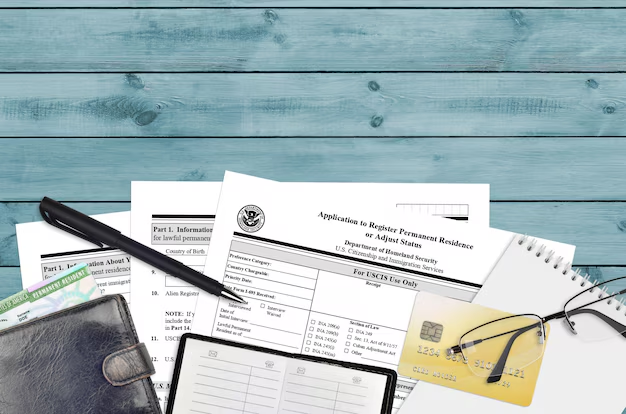Where to Send Your Form 1040: A Comprehensive Guide for Tax Filers
Filing a Form 1040, the standard federal income tax return, is a critical step in fulfilling your tax responsibilities as a resident of the United States. However, determining where to send this crucial document can often leave taxpayers puzzled. The information provided here aims to demystify the process, ensuring you send your Form 1040 to the right destination.
Understanding Your Form 1040
Before diving into where to send your Form 1040, it's beneficial to understand what this form entails. Form 1040 is an IRS tax form used by individuals to file their annual income tax returns. It calculates your total taxable income for the year, deductions, credits, and the tax owed or refund due.
There are variations of the Form 1040, including the 1040A and 1040EZ, though recent updates have simplified these into the Form 1040. Different forms might apply to specific situations, such as the Form 1040-NR for non-resident aliens.
Electronic Filing: A Preferred Approach
For many taxpayers, e-filing offers a straightforward and efficient option to submit tax returns. The IRS strongly encourages e-filing due to its convenience and security features. Most tax preparation software and services guide you through the process, reducing errors and ensuring faster processing times.
Benefits of E-filing
- Faster Refunds: E-filing with direct deposit allows for quicker refund processing.
- Accuracy: Built-in checks reduce the likelihood of errors.
- Confirmation: Immediate confirmation upon the receipt of your return.
- Convenience: Safely file your taxes from home.
Despite these benefits, some prefer or need to file paper returns due to personal preference or specific circumstances.
Where to Send Paper Form 1040
If you choose to send a paper return, understanding the correct mailing address is essential. The correct destination often depends on your state of residence and whether you owe taxes or are expecting a refund.
Key Considerations for Mailing Your 1040
- IRS Processing Centers: Different centers process forms based on geographic regions.
- Payment Inclusion: If you owe taxes, the address may differ from when you're seeking a refund.
- State of Residence: Your state often determines the appropriate IRS mailing address.
- Form Versions: Variations in forms may require slightly different handling.
Addresses for Sending Your Form 1040
Below is a simplified list for easy reference. Always check the IRS instructions or their website before mailing your forms, as addresses can be subject to change.
1. Without Payment Enclosed
- Alaska, California, Hawaii, Washington:
- Department of the Treasury, Internal Revenue Service, Fresno, CA 93888-0002
- Other States:
- Check the IRS guidelines for your specific region.
2. With Payment Enclosed
- Alaska, California, Hawaii, Washington:
- Internal Revenue Service, P.O. Box 7704, San Francisco, CA 94120-7704
- Other States:
- Again, consult the IRS for the details according to your region and situation.
Packaging and Postage Tips
- Secure Packaging: Ensure all documents are securely enclosed in an envelope.
- Correct Postage: Insufficient postage can delay your return.
- Certified Mail: Consider using certified mail to confirm delivery.
Important Deadlines and Extensions
Tax filing deadlines are crucial. Typically, Tax Day falls on April 15, though this can shift due to weekends or public holidays. Mark the date in your calendar to avoid penalties.
Extension Requests
If you're unable to meet the deadline, requesting an extension via Form 4868 can afford you an additional six months to file. However, it's important to note that an extension to file is not an extension to pay. Taxes owed must be estimated and paid by the typical deadline to avoid interest and penalties.
Common Mistakes in Filing
Avoiding common pitfalls can streamline your tax filing process:
- Incorrect Personal Information: Double-check names, Social Security Numbers, and addresses.
- Mathematical Errors: Calculation mistakes can affect refunds and owed amounts.
- Missing Schedules or Forms: Ensure all necessary attachments are completed and included.
- Forgetting to Sign: Unsigned returns are considered invalid.
Quick Reference Summary: Tax Filing Essentials
Here's a handy summary to guide your tax filing journey:
🗓️ Key Dates:
- April 15: Standard filing deadline.
- October 15: Extended deadline (if granted).
📬 Mailing Options:
- Check the IRS website for up-to-date addresses based on your specifics.
👉 Action Steps:
- Consider e-filing for convenience.
- Double-check all forms for errors or omissions.
- Submit payment, if necessary, by the original deadline.
💡 Tips for a Smooth Filing Experience:
- Keep copies of all submissions for your records.
- Use certified mail if filing by paper.
- Reach out to the IRS or a tax professional with questions.
The Role of Tax Professionals
For many individuals, consulting a tax professional can provide clarity and peace of mind. Tax professionals offer expertise that can help you navigate complex situations, maximize deductions, and ensure compliance with all tax regulations.
Closing Insights
Fulfilling your tax obligations efficiently involves understanding where and how to send your Form 1040 — a process that combines knowing IRS protocols with timely actions. Whether opting for electronic submission or traditional mail, staying informed empowers you to make the best decisions for your personal and financial well-being. Always verify the latest IRS guidelines or seek professional advice to cover all bases effectively.
